

The Pacific Undersea Gardens was located at the Inner Harbour in the heart of downtown Victoria. The Gardens were owned and operated by the Oak Bay Marine Group.


The Pacific Undersea Gardens was located at the Inner Harbour in the heart of downtown Victoria. The Gardens were owned and operated by the Oak Bay Marine Group.
The Pacific Undersea Gardens was a 150-foot (45 m) vessel that was towed from the Oak Bay Marina to the waters of the Inner Harbour. Visitors descended 15 feet (4.5 m) beneath the ocean surface to look through the many viewing windows of the aquariums that surrounded the vessel and see the various marine life of coastal British Columbia, in their natural and protected environment. The Gardens also had a tidal pond full of Sea stars and Sea Anemones where visitors were allowed to gently touch the animals.
Located at the end of the 150-foot (45 m) vessel of the Undersea Gardens was the Undersea Theatre. In the theatre, seating was provided where visitors would sit down and watch the show from the viewing windows of the aquarium. In the actual show, a guide would welcome them and narrate the show to explain the different wildlife in the aquarium.
A diver was also in the show with an equipped full-face communication mask in the water to guide you, as well, and handle the different animals that were in the theatre aquarium such as Crabs, Sea Urchins, Sea stars, Sea Anemones, Cabezon and Lingcod. However, the two main attractions of the theatre were the Wolf Eels and a Giant Pacific Octopus named "Armstrong". The Undersea Theatre show was 20 minutes long, making the daily total tour time to be around 45 to 60 minutes.
The Pacific Undersea Gardens housed more than 5,000 different species of British Columbia's marine life. The different marine life at the Gardens included different types of fish, Crabs, Sea stars, Sea Anemones, Sea Urchins, Sea Cucumbers, Scallops, Wolf Eels and the Giant Pacific Octopus.
In one exhibit, fish, such as the Red Snapper, Rock Fish, Cabezon, Lingcod, Greenlings, Sculpins, Perch and Halibut, swam through the kelp forest, as they were surrounded by different Sea stars, Anemones and Crabs.
In another exhibit, there was a school of about a thousand Pacific Salmon as they swam along the ruins of a sunken ship. In this exhibit the actual life cycle of the salmon took place as they laid eggs and gave birth to young.
In addition, there was another exhibit that was surrounded by a ghostly gardens of white and crimson Anemones. Amongst the surrounding anemones, there was the ferocious looking Wolf Eel as it lurked around the ocean and gliding through the reef was the Giant Pacific Octopus, which is the largest octopus in the world.
Every year, the Pacific Undersea Gardens and their volunteers got organized to start their annual Clean-Up of Victoria's Inner Harbour. The volunteers included the Pacific Navy Fleet Diving Unit, the Coast Guard Auxiliary 35 Unit and the area's local divers. This operation took months to organize, but was usually done within two hours. During the diving expedition to clean up the harbour, divers once removed about a hundred pounds (45 kg) of garbage. Some of the garbage had included suitcases, pants, bicycles, tires, boat batteries, cell-phones, shoes and a toilet.
Undersea Gardens was designed by Charles White in 1963. By 1976 the tour was operating in four Pacific coast cities: Victoria, B.C., Newport, Oregon, and two in California.
Charles White was a biologist and photographer who had previously worked for the Oregon Fish Commission studying salmon and as a charter fishing guide on Vancouver Island. "His love of fish and marine life led him to conceive and develop [the tour]". [1]
He is the author of the book 'How to Catch Salmon: Basic Fundamentals" which was very widely read. [2]
Pacific Undersea Gardens was originally opened at the Oak Bay Marina in 1964, and later relocated to its current location in Victoria's inner harbour in 1969. Its last day of operation was October 17, 2013. It was closed due to age and the high cost of improvements that would be required to bring it up to code. [3] Following its closure and removal from the Inner Harbour, the space it formerly occupied has since been taken over by the V2V ferry, which is a 3 hour, luxury, walk-on passenger only ferry to downtown Vancouver.
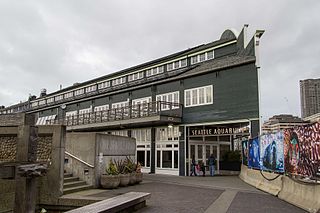
The Seattle Aquarium is a public aquarium in Seattle, Washington, United States, located on Pier 59 on the Elliott Bay waterfront. It opened in 1977 and has been accredited by the Association of Zoos and Aquariums (AZA).

The New England Aquarium is a public aquarium located in Boston, Massachusetts. The species exhibited include harbor and northern fur seals, California sea lions, African and southern rockhopper penguins, giant Pacific octopuses, weedy seadragons, and thousands of saltwater and freshwater fishes. In addition to the main aquarium building, attractions at Central Wharf include the Simons Theatre and the New England Aquarium Whale Watch. More than 1.3 million guests visited the aquarium each year prior to the outbreak of the COVID-19 pandemic.
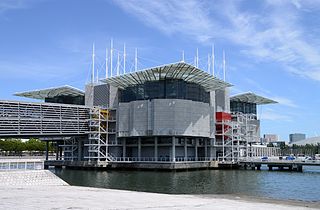
The Lisbon Oceanarium is an oceanarium in Lisbon, Portugal. It is located in the Parque das Nações, which was the exhibition grounds for the Expo '98. It is one of the largest indoor aquariums in Europe.

The Alaska SeaLife Center, Alaska's premier public aquarium and Alaska's only permanent marine mammal rehabilitation facility, is located on the shores of Resurrection Bay in Seward in the U.S. state of Alaska. Open since May 1998, it is dedicated to understanding and maintaining the integrity of the marine ecosystem of Alaska through research, rehabilitation, conservation, and public education. It is the only facility in the world specifically dedicated to studying the northern marine environment and the only one designed at the outset to combine research with public education and visitor components. The Alaska SeaLife Center generates and shares scientific knowledge to promote understanding and stewardship of Alaska's marine ecosystems.
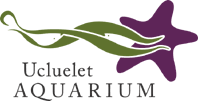
The Ucluelet Aquarium is a non-profit public aquarium in Ucluelet, a town on the west coast of Vancouver Island, British Columbia, Canada. The aquarium opened a new permanent building on 1 June 2012. The smaller temporary building located on the waterfront promenade had previously operated as a feasibility trial beginning in 2004 and ran seasonally until 2011. It exhibits marine plant and animal life native to the west coast of Vancouver Island. The aquarium fosters an "up close and personal" visitor experience through their educational approach, which encourages active participation with staff and volunteers in learning about the marine life on display.

Aquarium du Québec is a public aquarium located in the former city of Sainte-Foy in Quebec City, Quebec, Canada. The 16-hectare (40-acre) facility is home to more than 10,000 animals representing more than 300 species. It is operated by Société des établissements de plein air du Québec (Sépaq), and is a member of the Canadian Association of Zoos and Aquariums (CAZA).
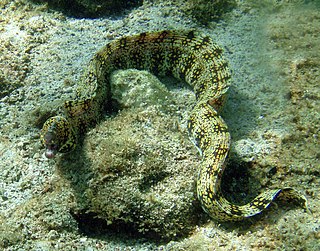
The snowflake moray, also known as the clouded moray among many vernacular names, is a species of marine eel of the family Muraenidae. It has blunt teeth ideal for its diet of crustaceans, a trait it shares with the zebra moray.
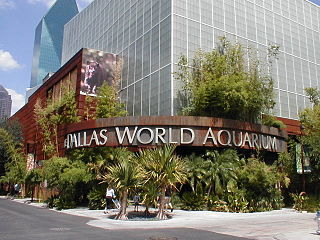
The Dallas World Aquarium is a for-profit aquarium and zoo located in the West End Historic District of Dallas, Texas, USA. It aids conservation and education by housing many animals that are threatened or endangered as part of a cooperative breeding program with other zoos around the world. It has been an accredited member of the Association of Zoos and Aquariums since 1997 and is a member of the World Association of Zoos and Aquariums.

Taraporewala Aquarium or Taraporevala Aquarium is India's oldest aquarium and one of Mumbai's main attractions. It hosts marine and freshwater fish. The aquarium is located on Marine Drive. The aquarium has a 12-foot long and 180 degree acrylic glass tunnel. The fish are kept in large glass tanks, which will be lit with LED lights.
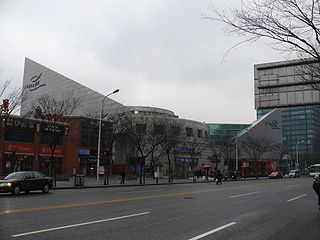
The Shanghai Ocean Aquarium is a public aquarium located in Shanghai, China.
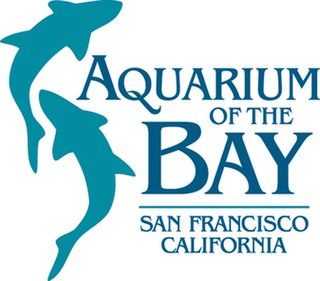
Aquarium of the Bay is a public aquarium located at The Embarcadero and Beach Street, at the edge of Pier 39 in San Francisco, California. The aquarium is focused on local aquatic animals from the San Francisco Bay and neighboring rivers and watersheds as far as the Sierra Mountains. Since 2005 the Aquarium has focused its mission on enabling ocean conservation and climate action both locally and globally. It is one of seven institutions under parent company Bay Ecotarium, the largest watershed conservation organization in the Bay Area

A bottom feeder is an aquatic animal that feeds on or near the bottom of a body of water. Biologists often use the terms benthos—particularly for invertebrates such as shellfish, crabs, crayfish, sea anemones, starfish, snails, bristleworms and sea cucumbers—and benthivore or benthivorous, for fish and invertebrates that feed on material from the bottom. However the term benthos includes all aquatic life that lives on or near the bottom, which means it also includes non-animals, such as plants and algae. Biologists also use specific terms that refer to bottom feeding fish, such as demersal fish, groundfish, benthic fish and benthopelagic fish. Examples of bottom feeding fish species groups are flatfish, eels, cod, haddock, bass, grouper, carp, bream (snapper) and some species of catfish and shark.
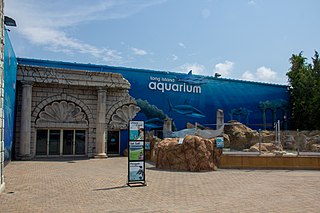
Long Island Aquarium is an aquarium that opened in 2000 on Long Island in Riverhead, New York, United States.
Sund Rock is a designated conservation area on the U.S. state of Washington's Hood Canal. The area is known for abundant and diverse life, including but not limited to Lingcod, Giant Pacific Octopus, Wolf Eel, as well as nudibranch, anemone, and sea cucumber.
Octopus Hole Conservation Area is defined as those waters, tidelands, and bedlands of Hood Canal within a line projected due east from the western shore of Hood Canal on latitude 47°27'01"N for 200 yards, thence southerly 628 yards parallel to the high watermark to latitude 47°26'40", thence due west to shore.

The Seaside Aquarium is a privately owned aquarium in Seaside, Oregon, United States. It is one of the oldest aquariums on the West Coast.

Palma Aquarium is a commercial aquarium and park that first opened in 2007 in Palma, Mallorca, Spain. The aquarium is the property of Coral World International. The aquarium is 500 m (1,600 ft) from Playa de Palma beach, and includes 55 tanks which are home to over 700 different species from the Mediterranean Sea and the Indian, Atlantic and Pacific Oceans. One tank, "Big Blue" is 8.5 m (28 ft) deep, the deepest shark tank in Europe, and it also contains the largest collection of live coral in Europe The park was awarded "Best Business Initiative in the Balearics 2007", awarded by Actualidad Económica magazine, and was awarded the "2007 Accessibility Prize" by the Consell de Mallorca.
The Shreveport Aquarium is an aquarium located in Bossier City, Louisiana, United States.
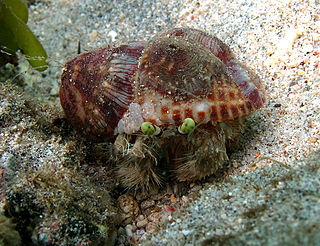
Dardanus deformis is a species of nocturnal hermit crab that is found in the Indo-Pacific. Its common name is pale anemone hermit. The species is known to transfer sea anemones from one shell to another when it moves to a different shell. It can be kept in an aquarium.
Coordinates: 48°25′17.36″N123°22′14.26″W / 48.4214889°N 123.3706278°W